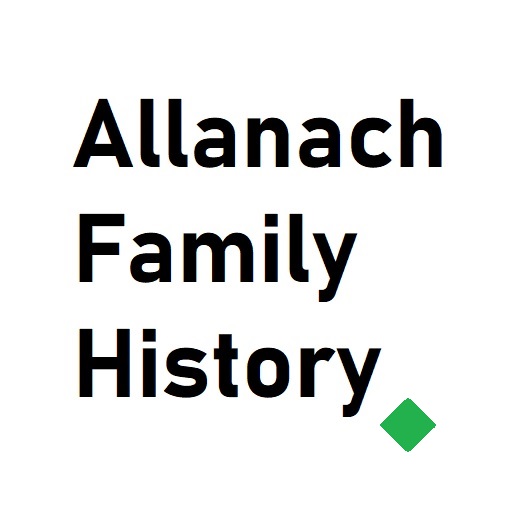Illegal whisky distilling would have been part of the Allanachs everyday world in the late 1700s and early 1800s.
Donside and in particular Strathdon and Glen Nochty were at the heart of the illegal business and we know that Duncan Allanach was fined five shillings in 1797 by a magistrate in Aberdeen for making £200 worth of whisky.
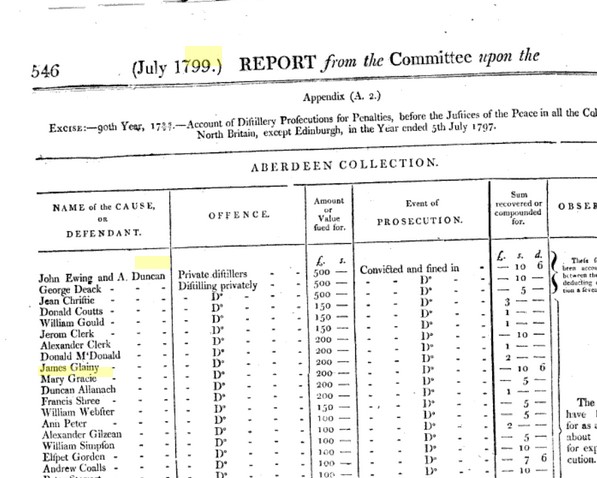
His son Duncan is also in the court reports for ‘rioting’ at a local fair in the 1820s, likely in connection with smuggling. Indeed when he was sentenced, it was on the same day that infamous Gauger Malcolm Gillespie was sentenced to be hung. Duncan Allanach – 1827 – Mill of Lessmore – Court – Riot Caledonian Mercury
So famous were the smuggling exploits of the ‘Glen Nochty boys’ , they even made it into a song ‘Nochty’s Glens in the Mornin”. It seems that the Allanach family continued illegal distilling into the 1830s and never went legitimate. A different story emerged on the other side of the Ladder hills. The song’s author John Milne heaped (perhaps unfair) praise on the gang from the other side of the Ladder Hills smuggling route – probably because he knew which side his bread was buttered on!
The rival gang was led by George Smith and he went legit with the first legal distillery in 1824. That distillery was called Glenlivet and they are now the best selling malt in the US, with millions in profit!
If only the Allanachs had done the same!
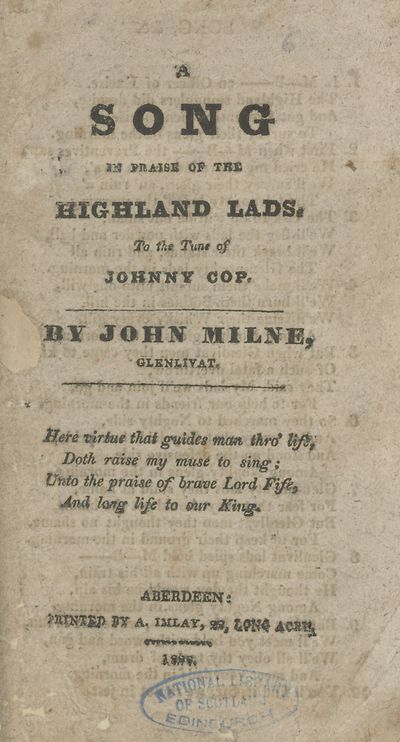

You can read much more about the local impact of smuggling here.
Another infamous tale from the whisky smuggling days was that of Eppie ‘lucky’ Thain. This remarkable woman lived to 99 years old and lived a few hundred yards up the track from Aldachie (now Lost Gallery pictured below) at the shebeen of Duff Defiance, and would have been a neighbour to Duncan Allanach. On the the Tobar an Dualchais site there are remarkable oral accounts recorded by her great grandson who met Eppie around 1879 when he was a child. It is amazing to think that audio recordings exist of someone meeting one of my Great Great Great Great Great Grandfather’s neighbours from the 1700s! You can hear the recording of the interview here.

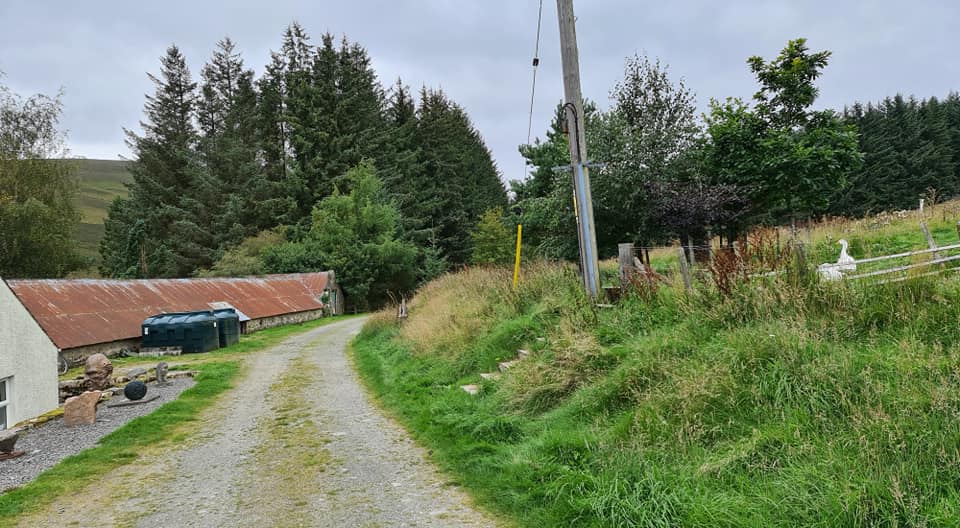
A brief history of whisky smuggling is also shown below (about Malcolm Gillespie at 9:30) :
If you are ever in Speyside, I would recommend you take a trip with Glenlivet Hill trek. We took a trip with Charles in 2021 and it was fantastic to see the terrain over which the smuggling would have taken place, as well as to try out the whisky in the bothy on the moors about the Glenlivet distillery!

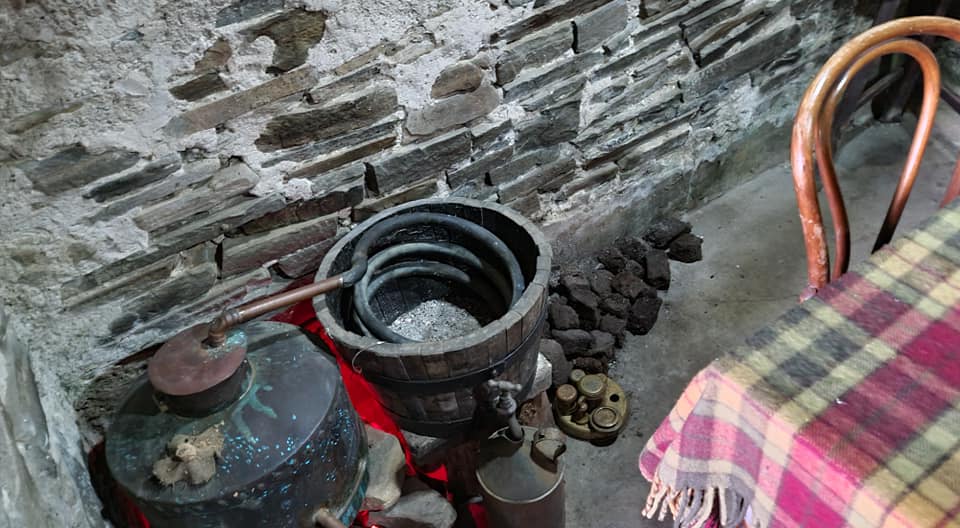
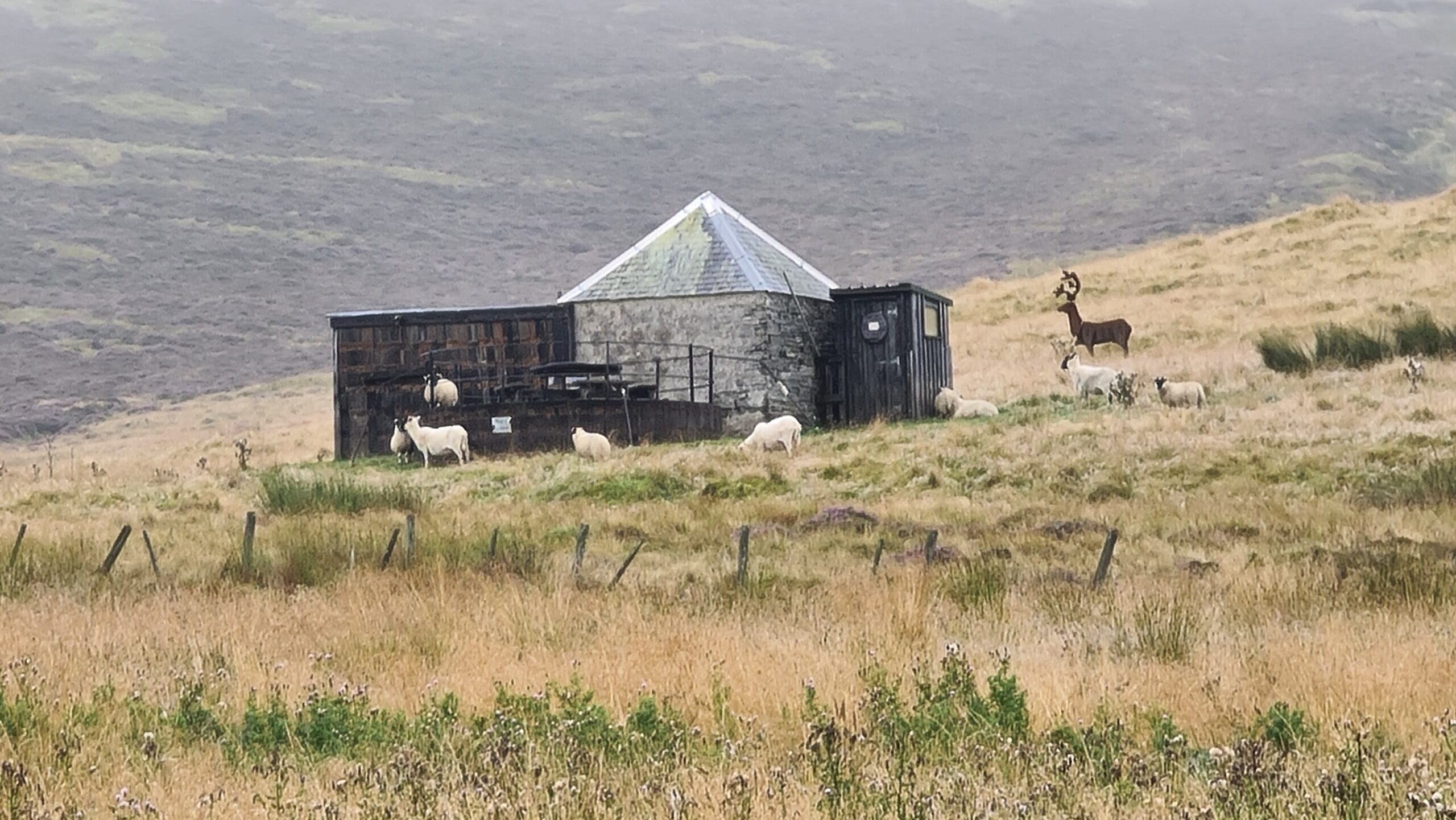

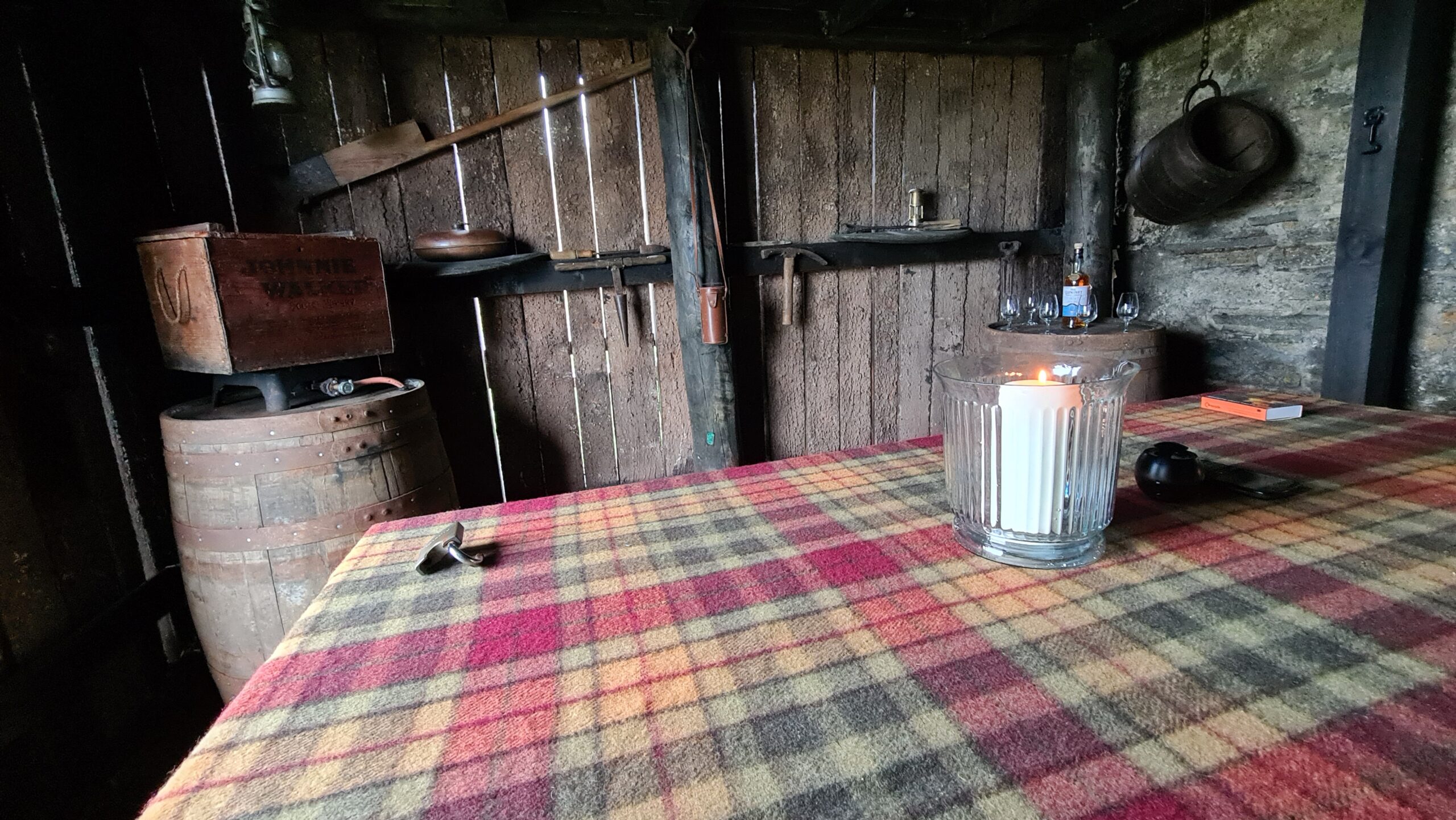
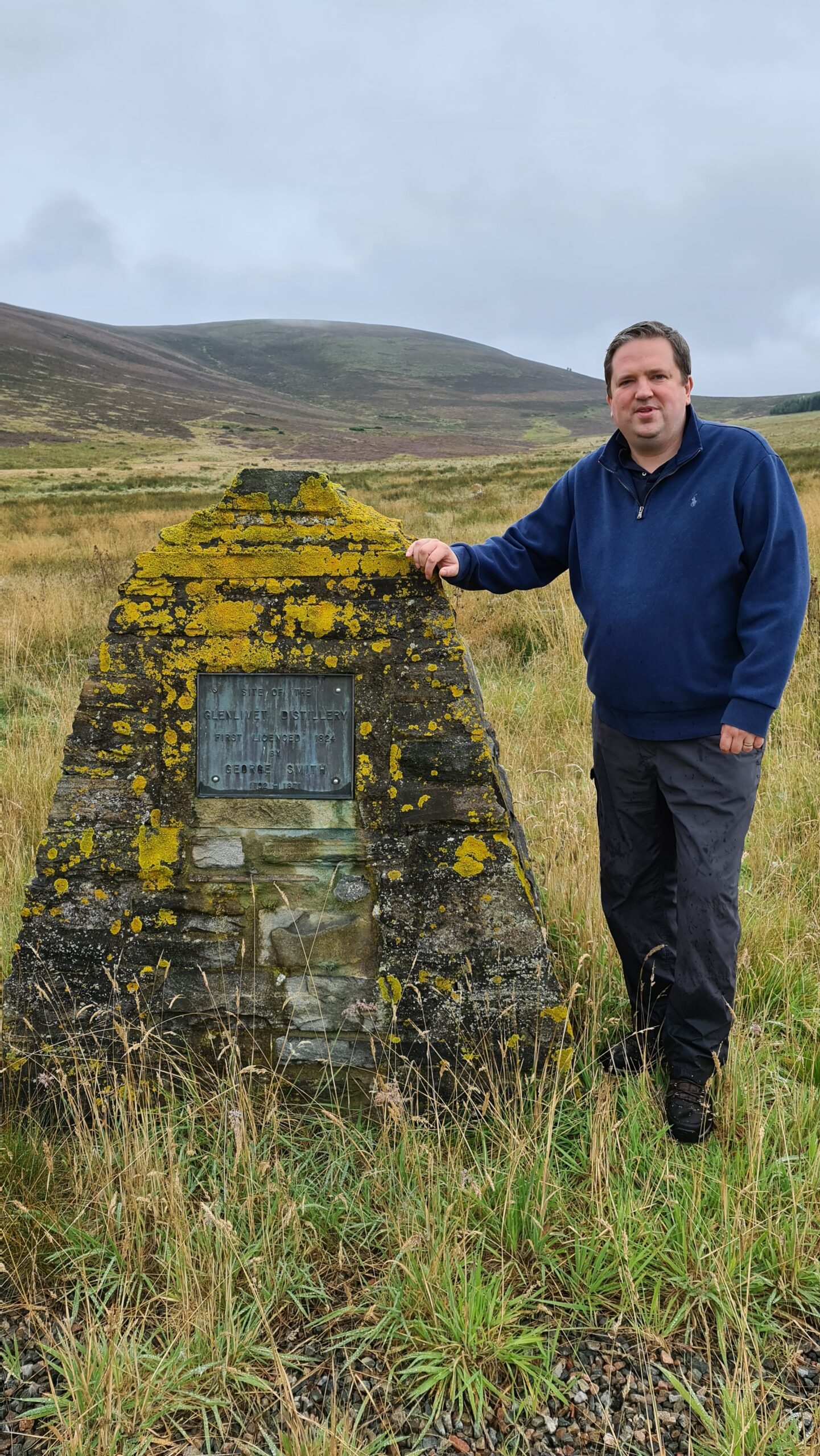
From the Whisky Magazine by Ian Mitchell
Speyside whisky is world-renowned.And everyone has heard of the Royal Lochnagar distillery on Deeside. But between these two major rivers of North East Scotland lies a more modest watercourse, the River Don. The Don no longer produces whisky, but it once did. The fertile reaches of Upper Donside (Strathdon) were for many years bandit country, where hundreds of sma stills were concealed in the surrounding hillsides. The pot still, fondly named the “Yowie wi the crookit horn” (Anglicised “ewe with the crooked horn”) brought a brief prosperity to Strathdon in the century following the Jacobite Rebellion of 1745.Upper Donside had been Jacobite territory and Corgarff Castle was garrisoned by Hanoverian troops after the ’45 Rebellion. In the years following the Jacobite defeat, the sma stills spread across the land. Looking back on this period in 1845, the Minister of the Kirk of Scotland at Strathdon stated: “This parish was one of the strongholds of smuggling. The inhabitants of Corgarff, the glens, and not a few of the lower part of the parish were professed smugglers. The Revenue officers were set at defiance. To be engaged in illicit distillation was neither looked upon as a crime, nor considered a disgrace.” Defiance was indeed the watchword. And in the upper reaches of lonely Glen Noughty, a side glen off Strathdon, stands today, and is marked on the O.S.map, a ruin called Duffdefiance. A man had been evicted from Glenlivet for illicit distilling. Unabashed, he crossed the Ladder Hills to Donside, and established a new distilling site in Glen Noughty. Here he also gained squatter’s rights by having a house built with its “lum reeking” before being challenged by the local laird, one Duff.Hence, Duffdefiance.In Glen Nochty a conflict also took place between distillers and excisemen that led to a popular ballad being written about it. Interestingly this ballad is written to the tune of the Jacobite song, Johnny Cope.A Glenlivet man wrote the song and gave the honours to his compatriots against the reputedly cowardly Donside men.Glen Noughty lads they stayed at hame For fear that they should get the blame But Glenlivet men they thought no shane For to keep their ground in the morning.Afuselade drove the gaugers off, but they returned with soldiers from the Corgarff Garrison. These appear to have had little appetite for their work and when met with a hail of stones, they retreated.Apart from the attentions of the 50 soldiers at Corgarff, other pressures were being brought to bear on the sma’ still owners.Charles Forbes bought the estate which included most of Upper Donside and announce his intention to stamp out the trade.In 1825 he inserted clauses in all his tenants’ leases, which stated that he prohibits his tenants from all concern, directly or indirectly, in illicit malting and distillation, or the selling of spirits. And he declares that a breach of this prohibition shall infer an immediate forfeiture of the lease.This had much more effect that the threat of arrest, usually accompanied by a small fine, in helping suppress the whisky trade.Of course the restrictions on legal, large scale distilling had been abolished in 1824 and changes to revenue laws made it much easier for those with some capital to set up in legal business.The family of McHardy, or rather the families, for there were many McHardies in Strathdon, had long been associated with illicit stills on Upper Donside, especially the McHardy’s of Burnside and Corryhoul.The estate records of Forbes note that “Margaret, widow of John McHardy of Easter Corryhoul, rents a farm at £13 a year, she has nine children and wishes to be continued a tenant, she has brewed whisky and has several times been fined.” In spite of his prohibition against distilling and threat to evict culprits, the estate records note he agreed to her continued tenancy.Evicting a widow with nine children was probably a step too far even for Forbes.It is rather ironic that the first legal distillery on Upper Donside was established by one James McHardy in Corgarff in 1826.McHardy possibly had fears about the security of his enterprise, since he set it up in the actual kitchens of Corgarff Castle where his potential customers included the local garrison. In the castle, and behind the secure star-shaped curtain wall, he probably felt he could survive local resentment.Today one can visit Corgarff Castle and see a fascinating reconstruction of McHardy’s distillery. A reconstruction since, despite the presence of the soldiers, the legal distillery was attacked and burned to the ground.The locals had successfully, for a time, destroyed a threat to their illegal incomes.Gradually however, the illegal trade was reduced, though never completely eradicated, as an incident from much later in the nineteenth century showed.Customs Officers had come off the train at Ballater on Deeside and were preparing to head over the hills for Donside and catch the McHardies at their work. They were, however, overheard by a fellow McHardy on the platform, and he ran by a more direct route than that taken by the gaugers, to warn those at Burnside. When the officers arrived they met a man coming off the hill with a cartload of peats, but could find no still. The railway line came to Ballater in 1864, so the story must refer to an occasion after that date.The site of the McHardy illicit still is still there, a rickle of stones in a hollow by the Corriehoul Burn above Burnside. It is set in a hollow by a stand of juniper which was the distillers’ favourite fuel as it gave little smoke.Illicit distilling died out on Donside, and legal distilling never became established after the burning down of the Corgarff Castle distillery.That act probably ensured that there would never be a Strathdon Malt to rival the Glenlivet, or the Lochnagar.
